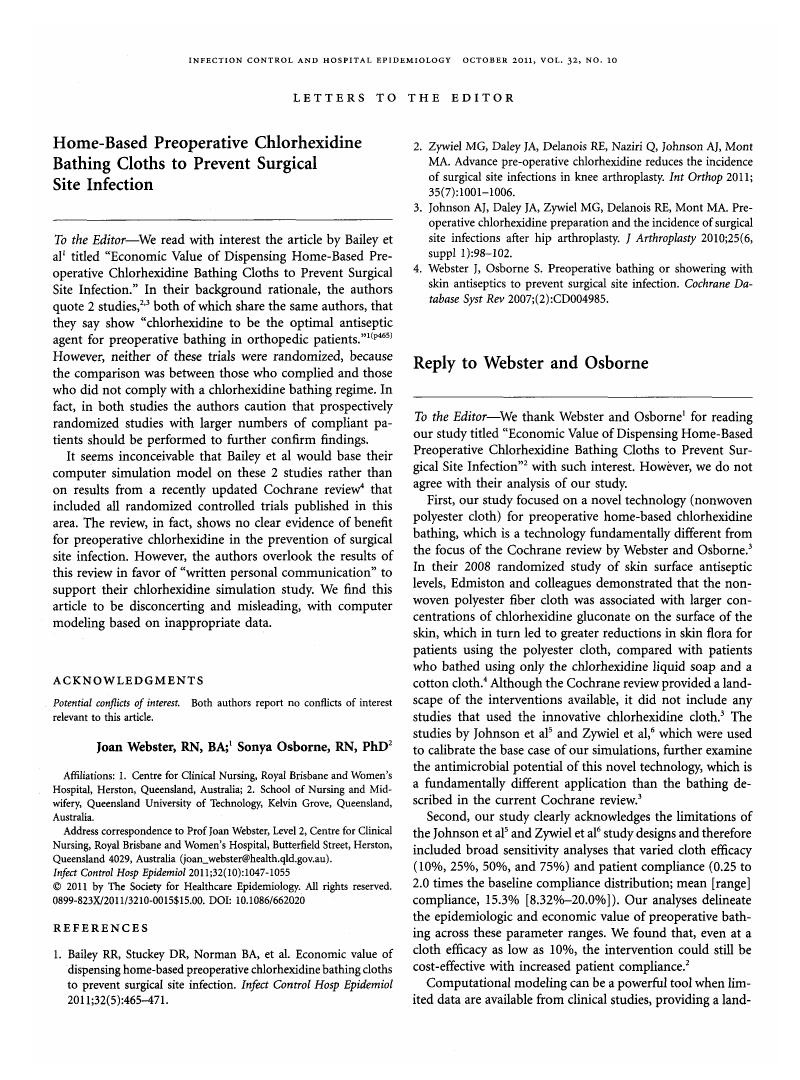No CrossRef data available.
Article contents
Reply to Webster and Osborne
Published online by Cambridge University Press: 02 January 2015
Abstract
An abstract is not available for this content so a preview has been provided. As you have access to this content, a full PDF is available via the ‘Save PDF’ action button.

- Type
- Letters to the Editor
- Information
- Copyright
- Copyright © The Society for Healthcare Epidemiology of America 2011
References
1.
Webster, J, Osborne, S. Home-based preoperative chlorhexidine bathing cloths to prevent surgical site infection. Infect Control Hosp Epidemiol
2011;32(10):1047 (in this issue).Google Scholar
2.
Bailey, RR, Stuckey, DR, Norman, BA, et al. Economic value of dispensing home-based preoperative chlorhexidine bathing cloths to prevent surgical site infection. Infect Control Hosp Epidemiol
2011;32(5):465–471.CrossRefGoogle ScholarPubMed
3.
Webster, J, Osborne, S. Preoperative bathing or showering with skin antiseptics to prevent surgical site infection. Cochrane Database Syst Rev
2007;2:CD004985.Google Scholar
4.
Edmiston, CE Jr, Krepel, CJ, Seabrook, GR, Lewis, BD, Brown, KR, Towne, JB. Preoperative shower revisited: can high topical anti-septic levels be achieved on the skin surface before surgical admission?
J Am Coll Surg
2008;207(2):233–239.CrossRefGoogle Scholar
5.
Johnson, AJ, Daley, JA, Zywiel, MG, Delanois, RE, Mont, MA. Preoperative chlorhexidine preparation and the incidence of surgical site infections after hip arthroplasty. J Arthroplasty
2010;25(6, suppl 1):98–102.Google Scholar
6.
Zywiel, MG, Daley, JA, Delanois, RE, Naziri, Q, Johnson, AJ, Mont, MA. Advance preoperative chlorhexidine reduces the incidence of surgical site infections in knee arthroplasty. Int Orthop
2011; 35(7):1001–1006.Google Scholar




